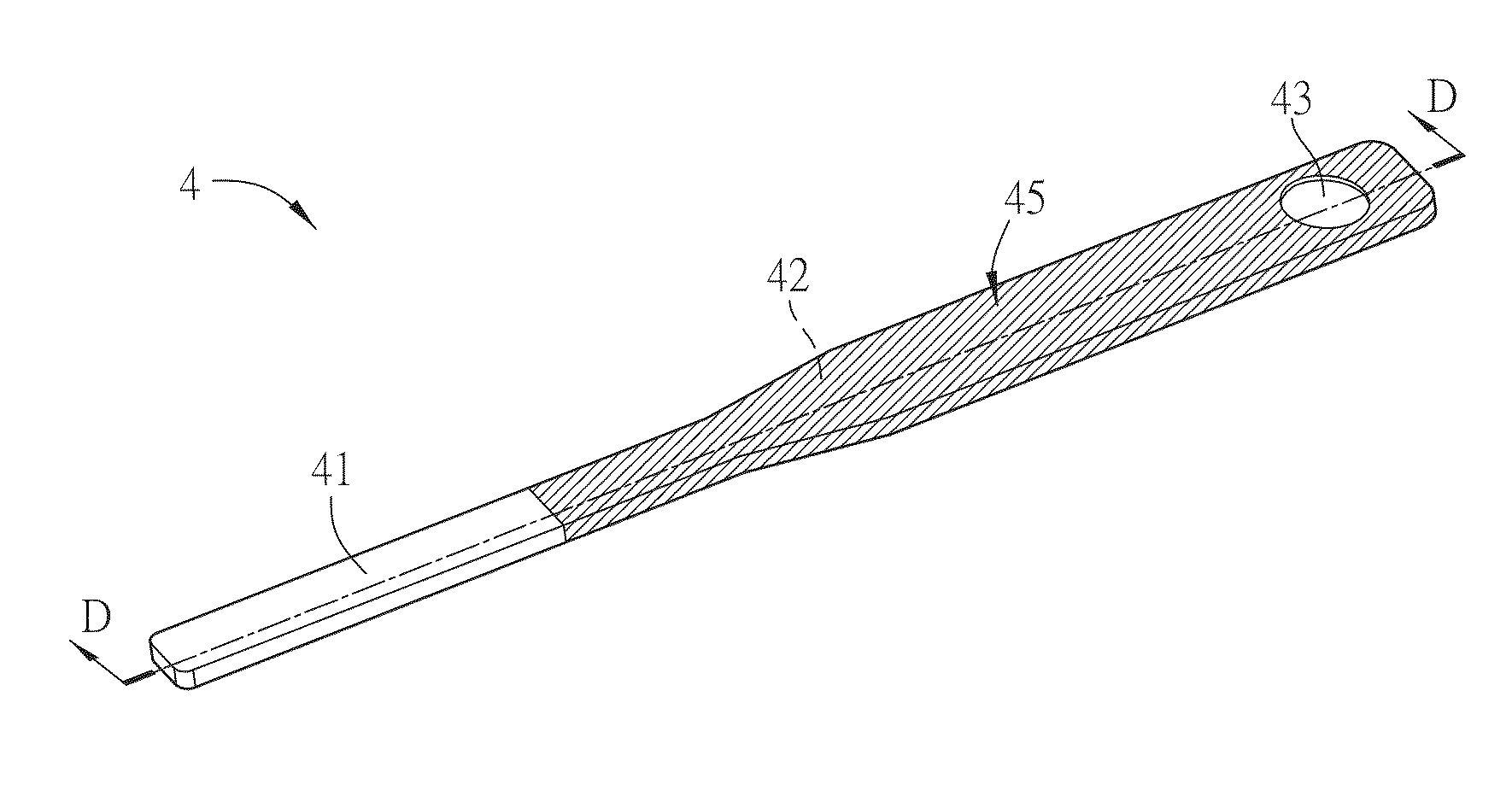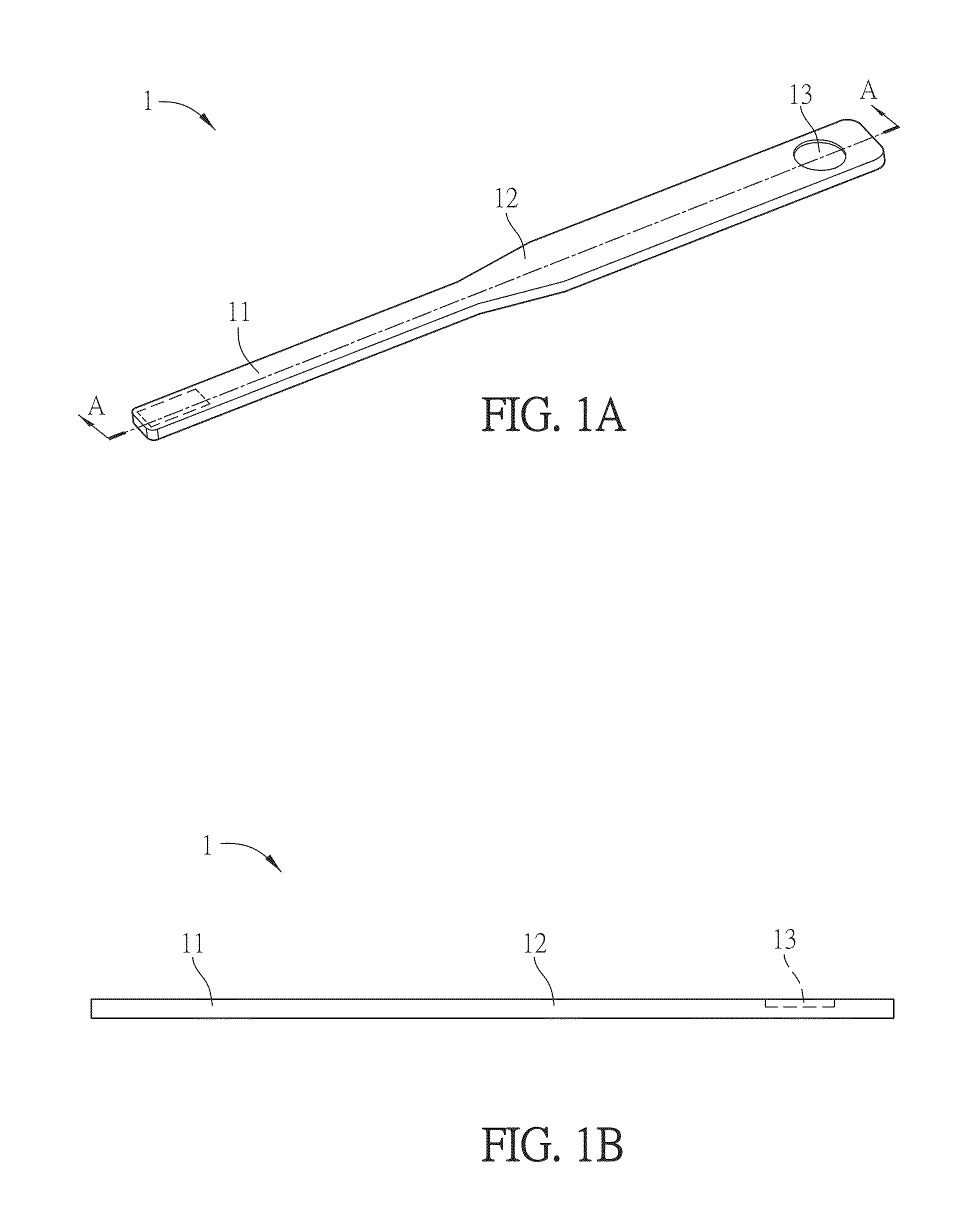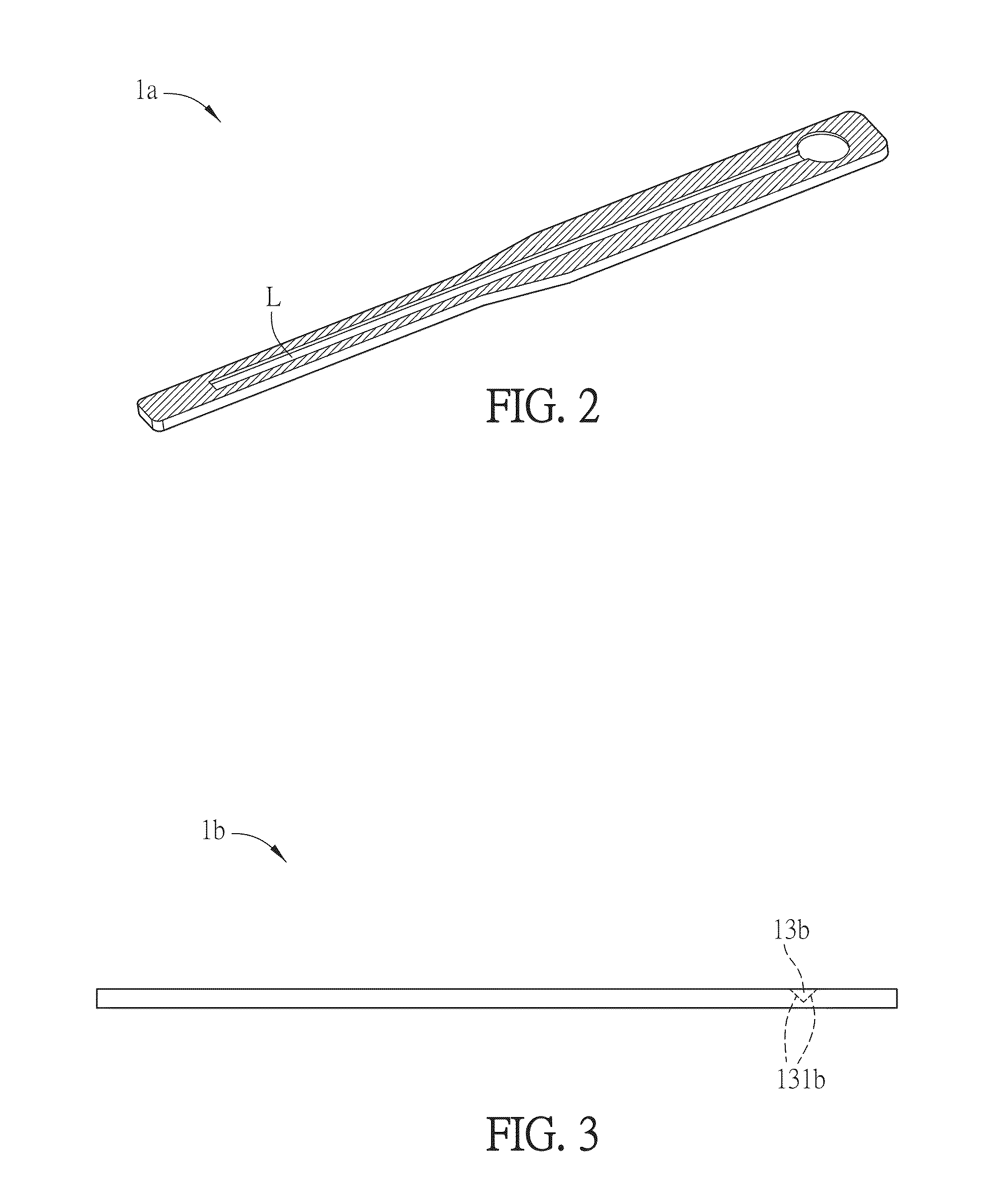Detection device and manufacturing method for the same
- Summary
- Abstract
- Description
- Claims
- Application Information
AI Technical Summary
Benefits of technology
Problems solved by technology
Method used
Image
Examples
experimental example 1
Detecting Glucose by the Detection Device 3
[0080]The enzyme reagent is dropped by micropipette onto the reaction portion 33 of the bulk body 34. The enzyme reagent includes 2 μL of 75 U / mL glucose oxidase (X-S type, Sigma Aldrich, St. Louis, Mo.), 15 U / Ml of HRP (VI-A type, Sigma Aldrich, St. Louis, Mo.), 2 mM of 4-aminoantipyrine (99%, Sigma Aldrich, St. Louis, Mo.), 10 mM of 4-(Dimethylamino)benzoic acid (98%, Sigma Aldrich, St. Louis, Mo., and 3% PEG (molecular weight 35,000 g / mol, Sigma Aldrich, St. Louis, Mo.). After adding the enzyme reagent, the detection device 3 is dried for 15 minutes at 25° C. Then, the sampling portion 31 of the detection device 3 is used to contact the test sample. The test samples include glucose solution of different concentrations (0 mM, 2.5 mM, 5 mM, 7.5 mM and 10 mM) in distilled deionized water. Waiting for 5 minutes, the color intensity of the bulk body 34 is determined by ImageJ analysis software.
[0081]The analysis result is shown in FIG. 8. Aft...
experimental example 2
Detecting Hydrogen Peroxide by the Detection Device 1
[0082]To be noted, the xylem fiber substrate for manufacturing the detection device 1 is optionally made by a bamboo. The enzyme reagent is dropped by micropipette onto the reaction portion 13. The enzyme reagent includes 2 μL of potassium iodide (0.6M) and 1.5 U / mL HRP. After adding the enzyme reagent, the detection device 1 is dried for 2 minutes at 25° C. Then, the sampling portion 11 of the detection device 1 is used to contact the test sample. The test samples include hydrogen peroxide solution of different concentrations (0%, 0.313%, 0.625%, 1.5% and 3%). Waiting for 5 minutes, the color intensity of the reaction portion 13 is determined by ImageJ analysis software.
[0083]The analysis result is shown in FIG. 9. After the test sample reacts with the enzyme reagent, the test result indicates that the detected mean intensity of the color reaction increases as the hydrogen peroxide concentration increases. In other words, the det...
experimental example 3
Detecting Lactic Acid by the Detection Device 2
[0084]To be noted, the xylem fiber substrate for manufacturing the detection device 2 is optionally made by a bamboo, while the bulk body 24 is optionally made by α-cellulose. The enzyme reagent is dropped by micropipette onto the reaction portion 23 of the bulk body 24. The enzyme reagent includes 6 μL of lactate dehydrogenase (500 U / mL), 1.95 mM of INT(2-(4-Iodophenyl)-3-(4-nitrophenyl)-5-phenyltetrazolium chloride), 3.75 mM of NAD, and 0.81 mM of phenazine methosulfate (PMS). After adding the enzyme reagent, the detection device 2 is dried for 2 minutes at 25° C. Then, the sampling portion 21 of the detection device 2 is used to contact the test sample. The test samples include lactic acid solution of different concentrations (0 mM, 0.5 mM, 5 mM and 50 mM). Waiting for 5 minutes, the color intensity of the bulk body 24 is determined by ImageJ analysis software.
[0085]The analysis result is shown in FIG. 10. After the test sample react...
PUM
 Login to View More
Login to View More Abstract
Description
Claims
Application Information
 Login to View More
Login to View More - R&D
- Intellectual Property
- Life Sciences
- Materials
- Tech Scout
- Unparalleled Data Quality
- Higher Quality Content
- 60% Fewer Hallucinations
Browse by: Latest US Patents, China's latest patents, Technical Efficacy Thesaurus, Application Domain, Technology Topic, Popular Technical Reports.
© 2025 PatSnap. All rights reserved.Legal|Privacy policy|Modern Slavery Act Transparency Statement|Sitemap|About US| Contact US: help@patsnap.com



